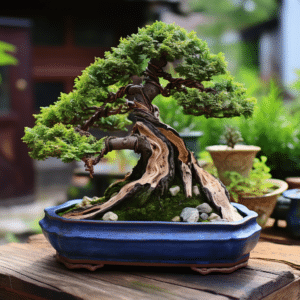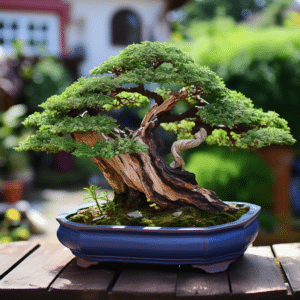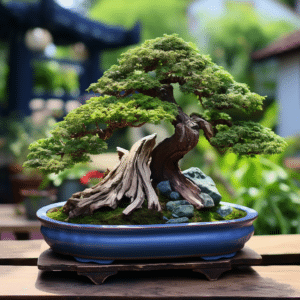Growing a bonsai tree can be a rewarding and therapeutic hobby. These miniature trees are a beautiful addition to any home or office, bringing a touch of nature indoors. The art of bonsai, which originated in Japan, involves careful cultivation and pruning to create a small, yet perfectly formed tree. This guide will walk you through the process of growing a bonsai tree from start to finish.
Understanding Bonsai

Before you begin growing your bonsai tree, it’s important to understand what bonsai is. Bonsai is not a specific type of tree; rather, it is a method of pruning and shaping that can be applied to many different types of trees. The goal is to create a miniature, but realistic representation of nature.
The art of bonsai dates back over a thousand years, and has been passed down through generations. It requires patience and a keen eye for detail. However, with the right knowledge and tools, anyone can learn to grow a bonsai tree.
Choosing the Right Tree
The first step in growing a bonsai tree is choosing the right tree. There are many different types of trees that can be used for bonsai, including juniper, maple, and pine. The type of tree you choose will depend on your personal preference and the climate in which you live.
It’s also important to choose a tree that is healthy and strong. Look for a tree that has a sturdy trunk, healthy leaves, and no signs of disease or pests. A healthy tree will be more likely to thrive as a bonsai.
Starting Your Bonsai Tree

Once you have chosen your tree, the next step is to start the bonsai process. This involves planting the tree in a suitable pot, pruning it to the desired shape, and caring for it as it grows.
The pot you choose for your bonsai tree is very important. It should be shallow and wide, to allow the roots to spread out. The pot should also have drainage holes to prevent water from pooling and causing root rot.
Planting Your Tree
When planting your tree, it’s important to use a soil mix that is specifically designed for bonsai. This type of soil drains well, which is crucial for the health of your tree. The tree should be planted in the center of the pot, with the top of the root ball level with the rim of the pot.
After planting, water your tree thoroughly. The soil should be kept moist, but not waterlogged. It’s also a good idea to mist the leaves of your tree with water, as this can help to increase humidity and keep the tree healthy.
Pruning and Shaping Your Tree
Pruning is a key part of the bonsai process. This involves cutting back the branches and leaves of the tree to create the desired shape. The goal is to create a tree that is miniature in size, but still looks like a full-sized tree.
When pruning your tree, it’s important to use sharp, clean tools. This will ensure clean cuts and reduce the risk of disease. Always prune back to a leaf or bud, to encourage new growth.
Caring for Your Bonsai Tree

Once your bonsai tree is planted and pruned, the next step is to care for it as it grows. This involves regular watering, feeding, and pruning to maintain the shape of the tree.
Bonsai trees require regular watering. The soil should be kept moist, but not waterlogged. It’s also a good idea to mist the leaves of your tree with water, as this can help to increase humidity and keep the tree healthy.
Feeding Your Tree
Bonsai trees also require regular feeding. This involves applying a bonsai-specific fertilizer to the soil. The fertilizer should be applied according to the instructions on the package, usually once every two weeks during the growing season.
It’s also important to monitor the health of your tree. Look for signs of disease or pests, such as yellowing leaves or small holes in the leaves. If you notice any problems, take action immediately to prevent further damage.
Pruning and Shaping
As your bonsai tree grows, it will need to be pruned and shaped regularly. This involves cutting back the branches and leaves to maintain the desired shape. It’s also important to remove any dead or diseased branches to keep the tree healthy.
Pruning and shaping should be done with sharp, clean tools. Always cut back to a leaf or bud, to encourage new growth. And remember, the goal is to create a tree that is miniature in size, but still looks like a full-sized tree.
Conclusion
Growing a bonsai tree is a rewarding hobby that requires patience and attention to detail. With the right knowledge and tools, anyone can learn to grow a bonsai tree. So why not give it a try? You might just find that it’s the perfect way to bring a touch of nature into your home or office.